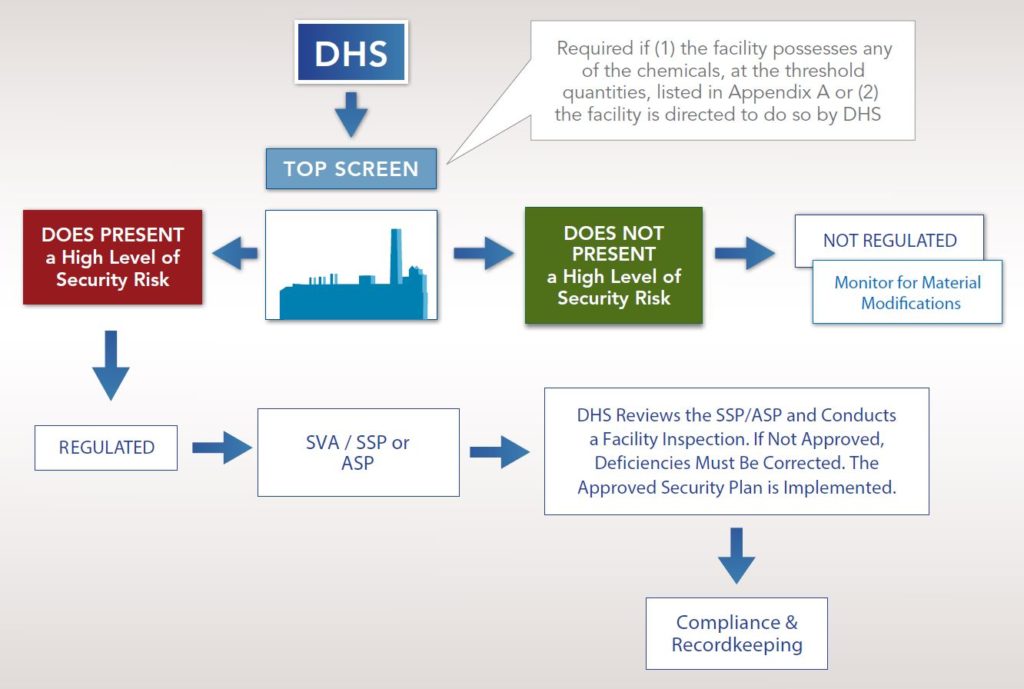The Department of Homeland Security (DHS) greatly emphasizes safe keeping and proper management of chemicals in US facilities. Because these facilities operate in a global network of manufacturing, distribution, and storage of these chemicals, the DHS stipulates safety and security regulations that ensure hazardous or dangerous chemicals stay away from those who would misuse them. To help facilitate these notions in practice, the Chemical Facility Anti-Terrorism Standards (CFATS) was developed so that chemical facilities can abide by security compliance measures.
The CFATS regulations assess facilities based on a dynamic multi-tiered program to identify high-risk chemical facilities. A facility is considered high-risk according to its inventory, or potential inventory of Chemicals Of Interest (COI). There are more than 300 COI’s with respective Screening Threshold Quantities (STQ) that are categorized under three main security concerns to the DHS: • Release: Toxic, flammable, or explosive chemicals or materials that can be released at a facility.
• Theft or Diversion: Chemicals or materials that, if stolen or diverted, can be converted into weapons using simple chemistry, equipment, or techniques.
• Sabotage: Chemicals or materials that can be mixed with readily available materials.
Chemical Facilities must comply with CFATS regulations and submit reports on their chemical inventories and COI’s. The Infrastructure Security Compliance Division (ISCD) conducts audits, reviews, and approvals of all chemical facilities that hold COI’s to ensure their security plans and chemical management is up to regulatory standards. Facilities with COI’s will be assigned a high-risk tier (1-4, with 1 being the highest risk), and all facilities with COI’s must submit DHS chemical reports, in compliance with federal and state policies.
Department of Homeland Security (DHS) regulatory agendas are frequently updated, so it is imperative that chemical facilities attend to any changes that could be in active effect. Maintaining a high standard of adherence to regulatory compliances at a chemical facility helps safeguard national interests and facility operations through safety and security risk reduction.

With Chemical Safety’s EMS Software, chemical facilities can efficiently manage their inventories under DHS and other regulatory obligations. For facilities operating with COI’s, the EMS Facility’s module offers its clients DHS reporting formats, so to comply with CFATS and other regulatory programs.
Diligent record keeping of chemical lifecycle, permit tracking, proper regulatory reporting, and GHS Labeling, among other facility processes, are all paramount to the safety and security of a chemical facility’s operations. Chemical Safety provides its customers with facility safety and compliance features for audits and inspections, along with a plethora of additional software solutions, so that their chemical facilities are operating as proficiently possible.
For more information on Chemical Safety’s EMS solution, please visit https://chemicalsafety.com/

